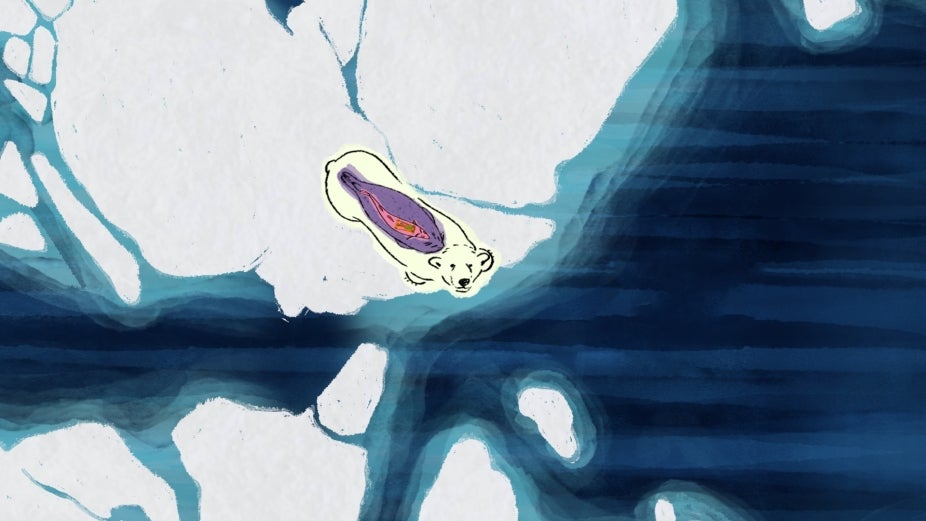A frozen sea in flux: Understanding changing Arctic Ocean ecosystems through art and science
We often think of forests as the “lungs of our planet,” yet phytoplankton produce half of the oxygen we breathe. These microscopic plants drift in the world’s oceans and are the foundation of marine food webs–supporting fish, seals, and polar bears in Arctic ecosystems. As sea ice melts and ocean temperatures rise, what will happen to phytoplankton and the organisms that depend on them?
In their Explorer Series Lecture, scientist Courtney Payne and artist Anna Lindemann discuss how the intersection of art and science helps our understanding of changes in Arctic marine ecosystems. Lindemann will talk about creating “Arctic Shifts,” an animation recently launched at the NSF NCAR Mesa Lab visitor center, and Payne will discuss the science behind the animation.
Anna Lindemann
Anna Lindemann calls herself an Evo Devo Artist. Her work as a composer, animator, and performer explores the field of evolutionary developmental biology (Evo Devo). Her work seeks to uncover narratives within rigorous scientific research, to visualize biological processes in novel ways, to define new creative processes modeled on biological processes, and to examine the human emotion and subjectivity behind scientific research. Her work, including the animated short “Beetle Bluffs” and the art-science performances Theory of Flight and The Colony, has been featured internationally at black box theaters, planetariums, galleries, digital arts conferences, concert halls, biology conferences, film festivals, classrooms from elementary schools to universities, scholarly publications, and natural history museums. Anna received an M.F.A. in Integrated Electronic Arts from Rensselaer Polytechnic Institute and a B.S. in Biology from Yale. She is an associate professor in the Digital Media & Design department at the University of Connecticut where she has pioneered courses integrating art and science.
Courtney Payne
Courtney Payne is a postdoc at the University of Colorado Boulder and the NSF National Center for Atmospheric Research (NSF NCAR). She completed her Ph.D. in Earth System Science at Stanford University. Her research focuses on primary production in the Arctic Ocean. She uses models, satellite remote sensing, and field experiments and observations to study changes in the timing and magnitude of phytoplankton blooms and the impacts of primary production on Arctic ecosystems.
